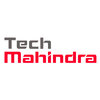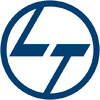Embedded Developer
60+ Embedded Developer Interview Questions and Answers
Asked in Gadgeon Systems

Q. What is Startup code?
Startup code is the code that initializes the hardware and software environment before the main application code runs.
Startup code sets up the stack, initializes memory, configures interrupts, and sets up the processor's initial state.
It is typically written in assembly language and is specific to the microcontroller or processor being used.
Examples of startup code include setting up the vector table, initializing the clock system, and configuring the memory map.
Asked in Smart-I Electronics Systems

Q. How do you drive a TFT display?
TFT displays can be driven using various interfaces like SPI, I2C, parallel, etc. and require specific initialization and configuration.
Choose the appropriate interface based on the display and microcontroller specifications.
Initialize the display controller and configure the required parameters like resolution, color depth, etc.
Send the display data using the chosen interface and the appropriate protocol.
Implement any required features like touch input, backlight control, et...read more

Asked in Bajaj Electricals

Q. What is the difference between an electric field and a magnetic field?
Electric fields arise from charged particles, while magnetic fields are produced by moving charges or magnetic materials.
Source: Electric fields are generated by stationary electric charges, while magnetic fields are created by moving charges (currents).
Direction: Electric fields point away from positive charges and toward negative charges, whereas magnetic fields have a direction defined by the right-hand rule.
Units: Electric fields are measured in volts per meter (V/m), whi...read more

Asked in BrainAlive

Q. Write a program to print a string without using a semicolon.
Use printf function to print a string without using a semicolon.
Use printf function with a newline character at the end to print the string without a semicolon.
Example: printf("Hello, World!\n") will print 'Hello, World!' without using a semicolon.

Asked in Cognizant

Q. What is the difference between timers and counters?
Timers are used to measure time intervals, while counters are used to count events or occurrences.
Timers are typically used for generating delays, measuring time intervals, or triggering events at specific times.
Counters are used to count external events, such as pulses or interrupts.
Timers can be used to implement software delays, while counters can be used for tasks like frequency measurement.
Examples: A timer can be used to generate a periodic interrupt every 1 millisecond...read more

Asked in Capgemini

Q. Stack memory in microcontroller
Stack memory in microcontrollers is used for storing local variables, function parameters, return addresses, and other temporary data during program execution.
Stack memory is a limited resource in microcontrollers and is typically smaller than heap memory.
Stack memory is managed automatically by the compiler and is organized as a LIFO (Last In, First Out) data structure.
Accessing stack memory is faster than accessing heap memory due to its linear allocation and deallocation p...read more
Embedded Developer Jobs




Asked in CIEL HR

Q. Reverse a string RTOS Linux Os
To reverse a string, iterate through the characters from the end to the beginning and build a new string.
Create a new string to store the reversed result.
Iterate through the original string from the end to the beginning.
Append each character to the new string.
Return the reversed string.

Asked in Polaris Smart Metering

Q. What is an interrupt?
An interrupt is a signal that temporarily halts a processor's current operations to prioritize a different task.
Interrupts allow the CPU to respond to asynchronous events, such as hardware signals.
Types of interrupts include hardware interrupts (e.g., keyboard input) and software interrupts (e.g., system calls).
They enable efficient multitasking by allowing the CPU to switch between tasks without polling.
Example: A timer interrupt can trigger an action at regular intervals, l...read more
Share interview questions and help millions of jobseekers 🌟

Asked in Thinkify Labs

Q. What is the IC 8051?
IC 8051 is a popular 8-bit microcontroller used in embedded systems.
IC 8051 is a family of 8-bit microcontrollers developed by Intel in the 1980s.
It is widely used in embedded systems for various applications such as automotive, industrial, and consumer electronics.
The IC 8051 has a Harvard architecture with separate program and data memory spaces.
It has a wide range of peripherals including timers, serial communication interfaces, and GPIO pins.
Examples of IC 8051 variants i...read more
Asked in Jyoti Telecom

Q. Tell me something about ESP32.
ESP32 is a low-cost, low-power system on a chip (SoC) microcontroller with integrated Wi-Fi and dual-mode Bluetooth.
Dual-core Tensilica LX6 microprocessors
Integrated 2.4 GHz Wi-Fi and Bluetooth
Low power consumption
Rich peripheral set
Support for various communication protocols like SPI, I2C, UART, etc.

Asked in mindframes.media

Q. What are some basic aptitude questions?
Basic aptitude questions assess logical reasoning, problem-solving, and analytical skills essential for embedded development.
Logical reasoning: Solve problems using deductive reasoning, e.g., if A > B and B > C, then A > C.
Numerical ability: Calculate percentages or ratios, e.g., what is 20% of 150?
Pattern recognition: Identify sequences, e.g., what comes next in the series 2, 4, 8, 16?
Spatial reasoning: Visualize objects in 3D, e.g., how many cubes are in a 3x3x3 cube?
Proble...read more
Asked in Gadgeon Systems

Q. Explain CAN arbitration.
CAN arbitration is the process by which multiple nodes on a CAN bus determine which message has the highest priority to be transmitted.
CAN arbitration is based on the identifier of the message, with lower values having higher priority.
When two nodes attempt to transmit at the same time, the one with the lower identifier wins and continues to transmit.
If two nodes start transmitting at the same time, a bit-wise arbitration process occurs until one node wins and the other backs...read more

Asked in Tech Mahindra

Q. What is your current CTC and expected CTC?
I am expecting a competitive salary based on my skills and experience.
I am open to negotiation based on the job requirements and responsibilities.
I am looking for a salary that is in line with industry standards.
I am willing to discuss benefits and other compensation packages.
I am not comfortable sharing my current salary as it is confidential.
I am looking for a long-term career opportunity with growth potential.

Asked in Sasken

Q. What is the difference between a macro and typedef?
Macro is a preprocessor directive that performs text replacement, while typedef creates an alias for data types.
Macro is resolved by the preprocessor before compilation, while typedef is resolved by the compiler during compilation.
Macros can be used for conditional compilation, while typedef is used to create new names for existing types.
Example: #define PI 3.14159 for macro, typedef int integer for typedef.

Asked in HCLTech

Q. How does memory allocation work in C?
Memory allocation in C involves dynamically allocating and deallocating memory during program execution.
Memory allocation in C is done using functions like malloc, calloc, realloc, and free.
malloc function is used to allocate a block of memory of a specified size.
calloc function is used to allocate a block of memory for an array of elements, initializing all bytes to zero.
realloc function is used to resize a previously allocated block of memory.
free function is used to deallo...read more
Asked in Thinkify Labs

Q. Explain what a microcontroller is.
A microcontroller is a small computer on a single integrated circuit that contains a processor core, memory, and programmable input/output peripherals.
Microcontrollers are used in embedded systems for controlling various devices and processes.
They are often programmed using C or assembly language.
Examples of microcontrollers include Arduino, Raspberry Pi, and PIC.
Asked in Amtronics Engineering Services

Q. Write a program to blink an LED.
A simple LED blink program toggles an LED on and off at regular intervals using a microcontroller.
Initialize the GPIO pin connected to the LED.
Set the pin mode to OUTPUT.
Use a loop to toggle the LED state.
Implement a delay function to control the blink rate.
Example: Use a delay of 500ms for a 1Hz blink rate.

Asked in Mantra Softech

Q. What are the differences between I2C and SPI?
I2C and SPI are two different communication protocols used in embedded systems.
I2C (Inter-Integrated Circuit) is a multi-master, multi-slave protocol with a slower data rate compared to SPI.
SPI (Serial Peripheral Interface) is a full-duplex, synchronous protocol with higher data rates but limited to one master device.
I2C uses two wires (SDA and SCL) for communication, while SPI typically uses four wires (MISO, MOSI, SCK, and SS).
I2C is more suitable for applications requiring...read more

Q. Different types of sensors
Sensors are devices that detect and respond to physical stimuli.
Temperature sensors (thermocouples, RTDs, thermistors)
Pressure sensors (piezoresistive, capacitive, piezoelectric)
Motion sensors (accelerometers, gyroscopes, magnetometers)
Light sensors (photodiodes, phototransistors, photovoltaic cells)
Gas sensors (carbon monoxide, oxygen, carbon dioxide)
Humidity sensors (capacitive, resistive)
Proximity sensors (inductive, capacitive, ultrasonic)

Asked in Infosys

Q. Tell me about projects you have worked on.

Asked in TCS

Q. Explain the concepts of Object-Oriented Programming (OOP).
OOP is a programming paradigm based on objects that encapsulate data and behavior, promoting modularity and reusability.
Encapsulation: Bundling data and methods that operate on the data within one unit (e.g., a class).
Inheritance: Mechanism to create a new class from an existing class, inheriting attributes and methods (e.g., a 'Dog' class inheriting from an 'Animal' class).
Polymorphism: Ability to present the same interface for different underlying data types (e.g., a functi...read more

Asked in BrainAlive

Q. How do you set and reset a bit?
Setting and resetting a bit involves changing the value of a specific bit in a binary number.
To set a bit, use bitwise OR operation with 1 at the desired position
To reset a bit, use bitwise AND operation with 0 at the desired position
Example: Set bit 3 in binary number 1010 (10 in decimal) -> 1010 | 0010 = 1010 (10)
Example: Reset bit 2 in binary number 1101 (13 in decimal) -> 1101 & 1011 = 1001 (9)
Asked in Thinkify Labs

Q. Explain the PC817 optocoupler.
The PC817 is an optocoupler used for isolating and transferring signals between circuits.
Consists of an LED and a phototransistor in a single package.
Commonly used for signal isolation in microcontroller applications.
Provides electrical isolation between input and output, enhancing safety.
Typical applications include switching power supplies and data communication.
Example: Used in interfacing microcontrollers with high-voltage circuits.

Asked in Renu Electronics

Q. Bit manipulation in
Bit manipulation involves operations on individual bits of binary numbers.
Bitwise AND, OR, XOR, and NOT operations are commonly used in bit manipulation.
Shifting bits left or right can be used to multiply or divide by powers of 2.
Setting or clearing specific bits using masks is another common technique.
Example: Setting the 3rd bit of a number to 1 - num |= (1 << 3);

Asked in Renu Electronics

Q. Data Types in C
Data types in C define the type of data that a variable can hold, such as int, float, char, etc.
Basic data types in C include int, float, char, double, and void.
Derived data types in C include arrays, pointers, structures, and unions.
Examples: int num = 10; float price = 25.50; char letter = 'A'; int arr[5];

Asked in Renu Electronics

Q. Structures in C
Structures in C are user-defined data types that allow for grouping different data types under a single name.
Structures can contain variables of different data types, allowing for more complex data organization.
They are defined using the 'struct' keyword.
Example: struct Person { char name[50]; int age; float salary; };
Individual members of a structure can be accessed using the dot operator (.)
Example: struct Person p1; p1.age = 30;

Asked in Capgemini

Q. Code in c language
The question is asking for code in the C language.
Use the 'C' programming language syntax to write the code.
Include necessary libraries and headers.
Provide a clear and concise solution to the problem.
Test the code thoroughly before submission.

Asked in Cognizant

Q. Technical Question:

Asked in Jio

Q. Where are you from?
I am from a small town where technology and nature coexist, fostering my passion for embedded systems and innovation.
Grew up in a town known for its tech startups, inspiring my interest in embedded systems.
Participated in local robotics competitions, enhancing my skills in programming and hardware integration.
Attended workshops on IoT, which solidified my desire to work in embedded development.

Asked in Agiliad

Q. Arbistration in CAN
Arbitration in CAN refers to the process of determining which message gets transmitted on the bus when multiple nodes attempt to send messages simultaneously.
Arbitration is based on the priority of the message identifier, with lower values having higher priority.
CAN uses a bitwise arbitration process where nodes compare their message identifiers bit by bit.
The node with the lowest identifier value wins arbitration and gets to transmit its message.
If two nodes start transmitti...read more
Interview Questions of Similar Designations
Interview Experiences of Popular Companies






Top Interview Questions for Embedded Developer Related Skills



Reviews
Interviews
Salaries
Users


















